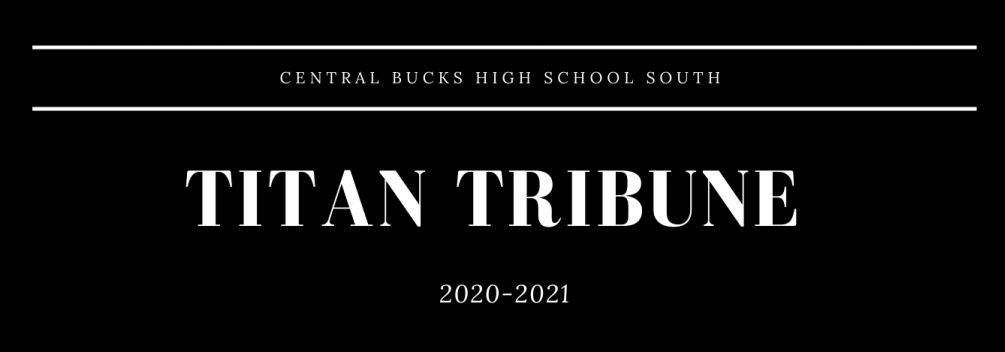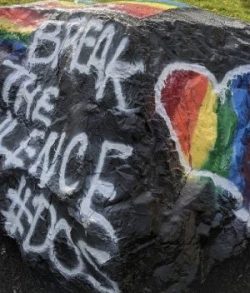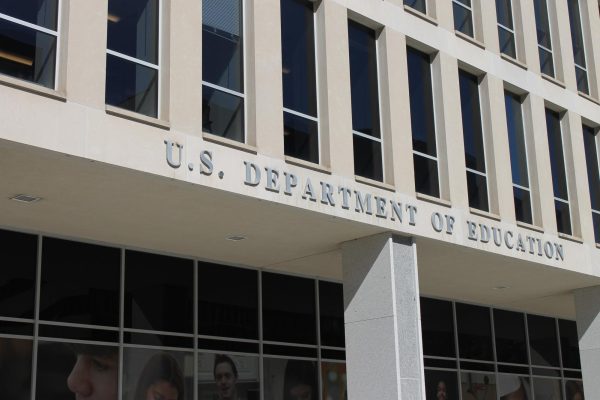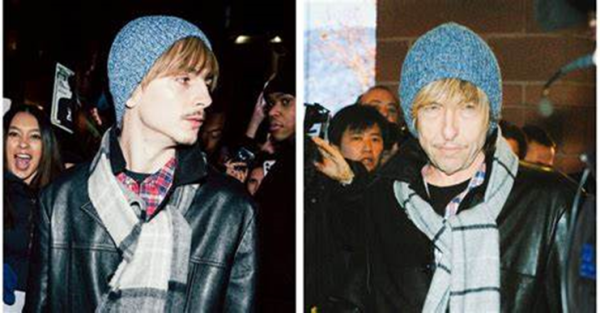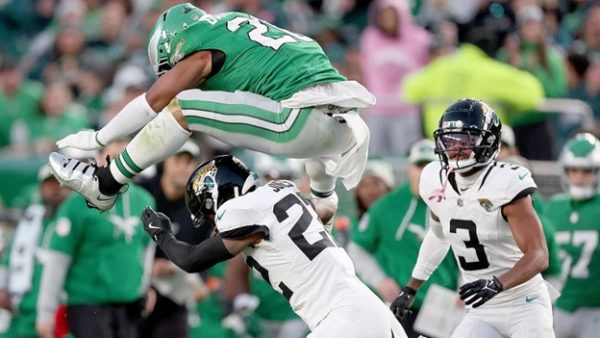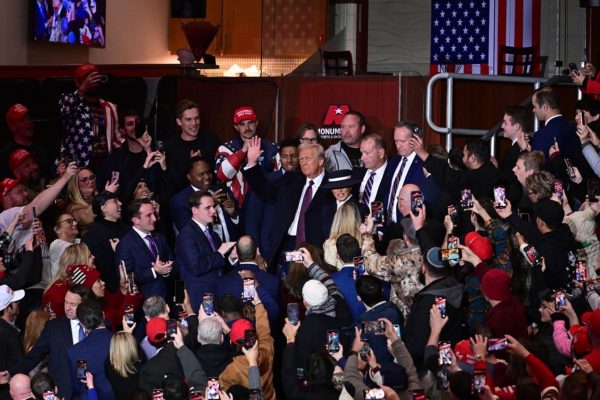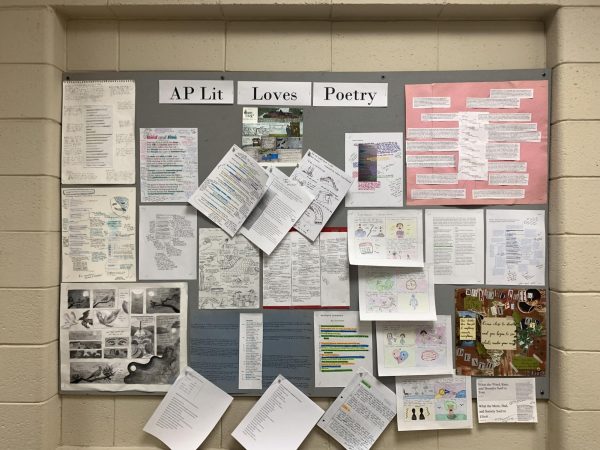CB South Participates in GLSEN’s Day of Silence for the First Time
On April 23, 2021, many CB South students pinned rainbow ribbons onto their clothing or backpacks and took a vow of silence for the day. These students were participating in the Day of Silence, a nationwide demonstration for LGBTQ rights and equality.
The Day of Silence is nationally and officially organized by GLSEN, an advocacy group for LGBTQ students. The first demonstration occurred in 1996 at the University of Virginia, where two students, Maria Pulzetti and Jessie Gilliam, created and organized the event to raise awareness of LGBTQ issues amongst their peers and the school’s faculty. Since then, the demonstration has become an annual protest against LGBTQ harassment and discrimination in schools that students across the country and the globe partake in.
At CB South, the Gay-Straight Alliance Club, or GSA, spearheaded the event as leaders for South’s first ever organized Day of Silence, which was also a collaborative effort with CB East and CB West. The students produced a video depicting club members holding up signs explaining why they took their vow of silence that was played during forum and distributed the rainbow ribbons participating students wore.
Seth Soderquist, a junior at CB South and an organizer with GSA, estimated that about 70 South students participated in the Day of Silence.
As a participant in the event, Seth described his experience as “very positive overall.”
“I thought it was really amazing to see all the cis, straight allies participating, because I remember in the past, when I first learned about it [the Day of Silence] in middle school, I really only saw queer people doing it,” Seth said. “But this year, at the high school, I saw a lot of allies participating, which I think is really powerful for queer people, to see how many allies they have at school and how many people support them, especially if they’re not comfortable or don’t think they have a lot of allies.”
Since participating in the event involves staying silent for the whole school day, Seth said he sees it as “a deliberate action people can take to show they care about and support” LGBTQ students.
“It’s very noticeable when there’s a lot of people who are silent,” he said. “Since the harassment and discrimination of LGBT people in schools, which I have faced a lot of in my time on this Earth, is a thing that a lot of people are silent about, this day is a strong action people can take to say the silence about the harassment and discrimination we face is unacceptable. It’s a group of people protesting saying that this is something that you can’t ignore anymore.”
Seth also discussed how he believes the event helped LGBTQ allies who participated understand the experience of their LGBTQ classmates better. They could experience firsthand a taste of the “silence, harassment, and discrimination” that their LGBTQ peers endure in their daily lives.
Even those who did not participate gained awareness during the event, since, according to Seth, “if someone’s being silent, that’s something you notice.” Non-participants can learn more about the experiences of LGBTQ students through noticing the quiet behaviors of their peers. They then can discover the reason for the sudden, which encompasses the purpose of the event – to raise visibility.
Mr. Kenneth Bui, the teacher advisor for GSA, said, “I was really proud of what our students did with Day of Silence, as East and West worked with us on the event and we all came together and broke that silence of a Teams call after school. It was great to have that unity with East and West as a district because it was a way to strengthen our ties as a community.”
However, even in the face of a unified front for LGBTQ rights and equality, bigotry reared its head. Despite the experience being “overwhelmingly positive,” Seth recounted that some sought to ruin the spirit of the day. He said, “[GSA] painted the rock for the Day of Silence, and after I left, there was a kid who was harassing two of the other organizers. He flipped them off and told them they were going to Hell and that they need to repent for their sins.”
Along with the harassment faced by the other organizers, Seth himself experienced cruel cyberbullying. In the comments of his Instagram post about the day, he received malicious messages, such as “you’re going to hell,” “kill yourself,” “God hates you,” and the f-slur.
While the vow of silence demonstration and its great turnout show hope for a more accepting future, the virulent harassment faced by Seth and his fellow organizers in person and online remind us of the sobering reason that the Day of Silence exists in the first place. Such incidents are unfortunately not an outlier when assessing the experiences of LGBTQ students in their schools across the country. LGBTQ students are commonly mocked, attacked, and excluded as their schools are often hostile environments for them.
The hatred LGBTQ students encounter during their educational careers is often ignored by their peers and by their school’s faculty. It was this silence on the hostility endured by LGBTQ students that led to the creation of the Day of Silence in 1996 as a protest against both the antagonism against LGBTQ students in schools and the lack of condemnation of these actions and support for LGBTQ students in school communities.
“It’s disheartening, it’s heartbreaking, it’s disappointing to know that comments and actions like [what Seth experienced] are happening but are also happening in response to something like Day of Silence,” said Mr. Bui. “The whole point of Day of Silence is to bring awareness to comments and actions like that, which are certainly not okay and certainly not reflective of the culture and community and home of CB South. As disheartening as that is, it bolsters why we have Day of Silence and why we work to make sure we have a community where people aren’t treated in that way, where voices of hate don’t overtake the voices of people who are marginalized.”
He continued, “That’s absolutely the reason why we do things like Day of Silence and have clubs like GSA, because we work towards making our school as safe and equitable to everyone as possible.”
Through events such as Day of Silence and groups like GSA, community members can help combat vitriol and cruelty in their schools and towns. Mr. Bui encourages more people to get involved with GSA, not necessarily as members, but with the things that the club does.
“We do a lot of things, like informing and spreading information, like our QR codes in front of the library, which kind of serve as our bulletin, and we try to collaborate with other schools,” he said.
Anyone is welcome to get involved in the GSA Club and its activities.
“The idea of GSA is always members of the LGBTQ+ community, but also allies,” Mr. Bui said. “I think people forget that the GSA is the Gay-Straight Alliance, an alliance where we have each other’s backs and support each other. It’s a club that I believe is necessary for our schools and students to have to gather in a place that is safe, but GSA also really is a club for our school and our community, for everyone to come closer together and be a close-knit community that cares for each other and looks out for each other and respects one another.”
Mr. Jason Bucher weighed in on the negative comments as well, saying, “It’s disturbing and certainly not something that as a school we want to accept as appropriate behavior. As principal, I’m very disappointed someone would act that way and disheartened that students had to experience it, but I know that we have work to do and we have the people in place to work collectively to make positive changes at CB South as it relates to equity and inclusion.”
One of the groups Mr. Bucher hopes to lead the charge for inclusion at South is Titans for Inclusion and Equity, or TIE.
“The one thing we’ve worked really hard on over the past really two years, but we’ve gotten interrupted due to the pandemic, was our group Titans for Inclusion and Equity,” he said. “We’ve done a lot of work with them. We did a book study over the summer months with students, teachers, and administrators, but the bulk of the work this year was applying for the No Place for Hate certification from the Anti-Defamation League, and there’s certainly more to do.”
The Anti-Defamation League’s No Place for Hate certification bolsters schools against both biases and bullying. The certification process involves a No Place for Hate Pledge, a school climate survey, and activities that encourage students and staff to challenge bias and bullying.
One activity TIE hosts is implicit bias training.
“You don’t always recognize what your biases are. [For example] as a teacher, as an educator… many times, if you have siblings in a class and the older brother was a high performing student and you see the younger brother on your class list, your assumption is that the younger brother is also going to be a high performer, but that’s not always the case. And that’s a very simple example of implicit bias,” Mr. Bucher explained.
“What the group did was take us through what has been said in schools throughout the nation and also comments that have been made in Central Bucks. It was very eye opening. Not all of what was said was said by students but also by staff, and not all of it was said with intention to be harmful,” Mr. Bucher said. “But that’s the problem. You don’t recognize your own implicit bias.”
TIE has led implicit bias trainings with CB South parents, with all the secondary and elementary principals in the district, and with the teachers at Jamison Elementary School and Gayman Elementary School. In addition to their implicit bias trainings, TIE has offered lessons on subjects such as calling students out versus calling them in and the importance of learning to pronounce people’s names.
Of the former, Mr. Bucher explained, “When you call a student out, you never educate them. You never have a discussion about why what they said is inappropriate, why it’s hurtful. When you call them in, you reprimand the behavior, but also have a conversation about why what they said is inappropriate and hurtful.”
Regarding name pronunciation, he stated that “not taking the time to learn how to pronounce a name says something about your willingness to get to know people and to work to include people in the educational or South community. It’s important out of respect and inclusiveness.”
Mr. Bucher said that TIE is “one of the most active groups at this point focusing on equity and inclusion throughout the school district.”
“When I speak with TIE, we bring up three terms: educate, embrace, and celebrate. We need to take time to educate the students on diversity, embrace our diversity, and celebrate it. I’m very hopeful that as time goes on with the TIE group, we can do bigger things at South to embrace inclusion and equity,” Mr. Bucher said.
“One of the bigger goals I would like to see with TIE is to see TIE be the focal point for the work we do with equity and inclusion and for all the other groups relevant to that,” he continued. “[For clubs] like GSA and Black Student Union to be connected to TIE and the work that we’re doing. I truly believe the more people we have working on a cause, the more widespread it’s going to be.”
As Pride Month dawns and rainbow flags are unfurled all over, it is important to remember that LGBTQ activism is not simply about parades and celebrations. These events have an important purpose in protesting the subpar and abhorrent treatment of LGBTQ individuals in their communities, whether that be a school community or any other one. Hatred still lives and often thrives in recesses of our own communities.
But through a sustained effort to create a more tolerant and welcoming community, we can all play our part in creating a brighter future where people from diverse backgrounds can be accepted and free from harassment. We must remain optimistic for future improvement, yet vigilant in our realism regarding the continued existence of hate and prejudice in our communities to achieve this goal.
A photograph of the CB South rock painted for the Day of Silence. Photo by Seth Soderquist.

